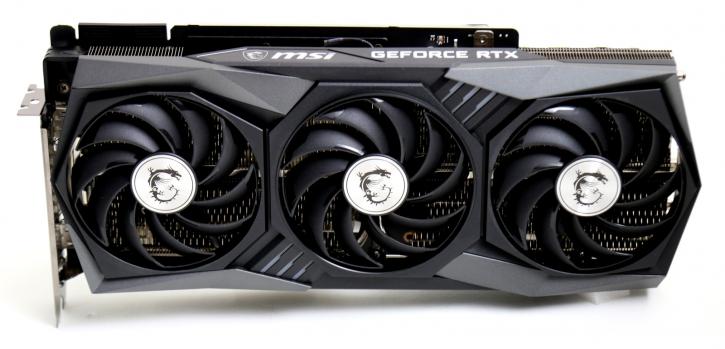Introduction
MSI GeForce RTX 3090 Gaming X TRIO review
We turn to MSI with their new GeForce RTX 3090 Gaming X TRIO 24G edition graphics card. A product that has been tweaked pretty much to the max straight out of the box offers a beefy cooler and 24 GB of the finest GDDR6X memory your money can get you. TRIO, of course, is short for a triple-fan solution with an otherwise heavily customized product. With their aim to perform at low acoustics combined with a beautiful design card. And let me already spill the beans, this card is once again SILENT and achieved the best score out of all cards we to date have gotten our hands-on.
But hey, now let's stick to what we have on deck; we review and benchmark the new premium flagship graphics card. All hail the might and awe that is the GeForce RTX 3090. Armed with a shader core count that will make at least one your eyebrows frown with a nearly nauseating 24 GB of blazingly fast GDDR6X graphics memory. The GeForce RTX 3080 already is a smoking hot product, but of course, but NVIDIA is NVIDIA and decided to go stretch their legs a little more. One thing that needs to be stated, though, the product like shown today is all about Ultra HD and higher resolutions. It is an RTX Titan replacement or successor, I should say. I write all this before testing the product, but already understand that it will be hard to show where this product will make real sense. The good news is, for me at least, a product doesn't have to make sense to be appreciable. I mean you like Ferrari as well eh? (albeit right now that probably right now that is not the best example). Well, Tesla maybe .. a model S is out of range for many, but man, they drive nice, accelerate fast, and you get that feel you're driving something from Star Trek. That said, in that realm, we think the RTX 3090 will position itself in its own niche.
It was 2017 when Ampere as a GPU architecture surfaced on the web and, up-to earlier this year, NVIDIA had not listed this name in any of its roadmaps on the consumer side. It was with military-level secrecy that the Ampere consumer part was developed. Ampere, of course, is the base unit of electric current in the international system of units. But the GPU is named after André-Marie Ampère, a French mathematician and physicist, considered the father of electrodynamics. NVIDIA has a track record of naming their GPU architectures after mathematicians and physicists or figures from closely related fields, to name a few; Pascal, Fermi, Kepler, Maxwell and, more recently, Turing. While it was no secret that the new GPUs would be based on Ampere, we've seen much discussion about fabrication nodes, architecture and specifications. Still, everybody seems to have forgotten that Ampere already launched earlier this year for the HPC market. The very first product based on Ampere was the NVIDIA Tesla A100, outfitted with a GA100 Ampere GPU based on 7nm fabricated at TSMC; that product holds 54 billion transistors and has 6912 Shader cores.
On September 1st of the year, 2020 NVIDIA announced three initial Ampere graphics cards in its first launch wave. A week before announcements, specifications of the GeForce RTX 3080 and 3090 took a twist; the shader core count mysteriously doubled up from what everybody expected. The GPUs are fabricated on an 8nm node derived from Samsung. This process is a further development of Samsung's 10nm process, no EUV is applied in production just yet. The first wave of announcements would see the GeForce RTX 3080 and 3090 being released first and, as a bit of a surprise, the GeForce RTX 3070 would be arriving in roughly the same timeframe as well. The initial launch of Ampere for consumers entails the GeForce RTX 3070 8GB GDDR6, RTX 3080 10GB GDDR6X, and what we test today, the 24GB GDDR6X based premium flagship, the mighty mo, the GeForce RTX 3090. The lineup nearly doubles Raytracing performance with Gen2 ray-tracing cores and 3rd iteration Tensor cores. These cards will all be PCIe 4.0 interface compatible and offer HDMI 2.1 and DisplayPort 1.4a, but most importantly, is that outrageous shader processor count (referred to as CUDA cores by NVIDIA), passing the 10K marker, nobody .. not even us saw that one coming.
The NVIDIA GA102 GPU is used initially for two products, the GeForce RTX 3080 and 3090 graphics cards. And it is one big GPU die and product overa;; alright, the 3090's GA102-300-A1 GPU is armed with 10.496 Shader processors and 28 billion transistors. And no, that's not even the fully unlocked product. FYI: the GeForce RTX 3080 is listed as having 8.704 Shader cores and the GeForce RTX 3070 (GA104) will bring 5.888 Shader cores to the table. In this review, we'll check out the mother of them all, the GeForce RTX 3090, paired with 24GB of all that GDDR6X graphics memory, 24 GB, and 10K+ Shader cores.
MSI GeForce RTX 3090 GAMING X TRIO 24G
The MSI GeForce RTX 3090 GAMING X TRIO 24G is again fitted with that NVIDIA GA102 GPU, this time the revision 300 GPU SKU; it has an almost unimaginable 10.469 Shader cores activated and is paired with a staggering 24GB of all new GDDR6X graphics memory running at 19.5 Gbps, values that have been unprecedented until now. MSI equipped the card with a semi-passive design; the three fans start to spin and cool once the GPU warms up. You'll notice one thing immediately; it has 3x 8 (6+2) pins, so you'd better have a compatible power supply (all three connectors must be used). The card is rated with a 370W power draw, that's 350W for the reference design. This indicates it will perform a notch better, alright. Weighing in at 1565g, this baby also has been sized quite big, 335 x 140 x 56mm. The out of the box boost clock for this product is a relatively high 1785 MHz (1695 MHz is the reference clock). But hey, judge for yourself, let's start up this review, shall we?


